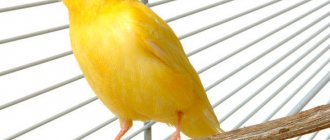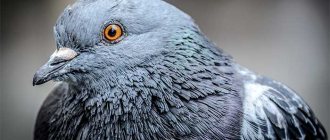A hedgehog is a small animal whose body is covered with many needles. Quite often you can meet a hedgehog in the evening in the forest or in garden plots. Many people wonder whether they should get a hedgehog as a pet. Before you get an exotic animal, the question arises: how long do hedgehogs live?
In nature, hedgehogs live 3-5 years. At home, hedgehogs can live 8-10 years. Among hedgehogs there are long-livers who live up to 12-15 years.
Structure and appearance
Hedgehogs are compact, prickly animals. They grow up to 10-44 cm excluding the tail, the length of which varies between 1-21 cm.
The average weight of animals is 300-1500 g.
The external features of the animals depend on what species they belong to. But the general description of animals looks like this:
- The head is large, wedge-shaped, with a pointed, wet nose on an elongated muzzle.
- The teeth are sharp and small. There are 16 units on the lower jaw, 20 on the upper jaw. The front incisors are large and resemble fangs. In some species, the number of teeth is increased to 44.
- Limbs of different lengths. The front ones are noticeably shorter than the rear ones. Almost all types of spiny animals, with the exception of white-bellied ones, have 5 fingers.
- The body is elongated, with well-developed subcutaneous muscles, due to which the spiny animal easily curls into a ball.
- The needles are hollow, predominantly dark-colored with alternating light stripes. On average, up to 10,000 gradually renewed spines grow on the body of animals, between which there are sparse, thin, barely visible villi. The abdomen and head are covered with regular hair. Spiny hedgehogs can be white, sandy, brown or brownish-black in color.
Breed selection
Today, there are several genera of hedgehogs intended for keeping at home: African, Steppe, Eurasian and Eared.
Representatives of African hedgehogs:
- Algerian;
- White-bellied;
- Somali;
- South African.
These individuals are thermophilic and need high temperature and humidity.
The following breeds are classified as Steppe:
- Daursky;
- Chinese.
Their maintenance also requires high temperature, but not too much air humidity.
The Eurasian genus is:
- Amursky;
- Eastern European;
- European (Ordinary).
These species adapt well to our climatic conditions.
The Eared genus includes:
- Apodal;
- Indian;
- Collared;
- Dark needle;
- Eared;
- Ethiopian.
The most popular among pet lovers is the African pygmy hedgehog, as this breed was specially bred for home keeping. Its main qualities are its small size and resistance to disease.
Varieties
The hedgehog family includes 7 genera, which are divided into 23 species. The most interesting of them are:
- European (ordinary) hedgehogs living throughout European territory and parts of Asian countries. They weigh about 800 g and grow up to 20-30 cm.
- Eared hedgehogs that live in China, India, Africa, Asia Minor and Central Asia. They have relatively long ears and are small in size. The average weight of a hedgehog does not exceed 430 g. And the body length of the prickly animal varies between 12-27 cm.
- Eastern European hedgehogs, which in addition to Eastern Europe live in the Urals and in the Middle Eastern countries. They weigh up to 1.2 kg with a body length of about 35 cm. The spiny animals are similar to the common hedgehog, but have a lighter color on the belly and the front of the neck.
- African pygmy hedgehogs live in Mauritania, Senegal, Ethiopia, Sudan and Nigeria. They have needles with white tips and weigh only 350-700 g with a length of 15-22 cm. When danger arises, the tiny prickly animals begin to snort and scream very loudly.
- Daurian hedgehogs, whose habitat stretches from the Transbaikal steppes to Mongolia and Northern China. The spiny animals are covered with gray or dark brown hair and have short sandy or brown needles.
- Long-spined hedgehogs that live in the Arabian Peninsula and the Middle East. The spiny animals weigh 500-900 g with a body length of 22-27 cm. They have long thick needles, painted in dark or light shades.
African pygmy hedgehog
Duration and lifestyle
The hedgehog that lives in nature has a lot of enemies. Therefore, its average life expectancy is 3-5 years. If he is provided with proper home care, he will live 5 years longer.
Hedgehogs live alone. Each of them has its own territory. Spiny animals are nocturnal. During the day, they sleep under stones, in rock crevices or in self-dug holes, the depth of which does not exceed 1 m.
At night, the animals search for food. Although hedgehogs are excellent at navigating in the dark, they try not to wander far from home.
On a note. To avoid making their own homes, hedgehogs often inhabit abandoned rodent burrows.
Hibernation coincides with the arrival of cold weather. It begins in autumn, when the air temperature drops to +10 °C. Most often this happens at the end of October or early November.
Their hibernation period lasts an average of 127 days. Therefore, in the summer, animals must feed very intensively in order to accumulate a rich layer of fat and not die of hunger in the winter. Before hibernating, hedgehogs stop feeding to empty their intestines.
They wake up completely weakened and emaciated, and to restore the body they begin to hunt around the clock.
On a note. Hedgehogs that live in the southern regions hibernate during periods of drought.
What affects life expectancy at home
By contacting a doctor in a timely manner, you prolong the life of your pet.
The fashion for hedgehogs is gaining momentum every year. In order for a pet to live long, you need to know that it needs proper feeding. Hedgehogs, even very young ones, should not be fed milk; this can lead to severe digestive upset and death. The basis of a proper diet is protein foods, for example, insects, which will have to be purchased in a special store.
You should not keep several animals in one cage. Their struggle for territory may end in the death of one of them.
Timely seeking veterinary help also prolongs your pet's life.
Pedigree also affects life expectancy; it is advisable to buy a pet only from a healthy couple with good genetics.
Selection does not stand still. Modern scientists and breeders are trying to develop pedigree and hybrid forms in which a longer life span will be genetically fixed.
When purchasing an ordinary or decorative hedgehog as a pet, do not forget that only proper care and love from the owner prolongs the pet’s life.
Interesting Facts
Over the years that hedgehogs have lived on the planet, a lot of interesting information has been collected about them:
- In ancient Rome, the prickly skins of these animals were used to comb sheep.
- A wild hedgehog can carry rabies, hemorrhagic fever, salmonellosis and ringworm.
- Residents of Serbia use hedgehog urine to treat alcoholism. And animal hearts are used as a talisman that protects against diseases.
- Gypsies fry and eat hedgehogs.
- In the first half of the 20th century, the McDonald¢s restaurant chain became an indirect cause of the death of a large number of prickly animals. Hedgehogs love sweets very much and, wanting to enjoy the remains of ice cream, they stuck their heads into discarded cups, got stuck there and died. After protests by animal rights activists, the company changed the diameter of the neck of the cups, and the animals stopped dying.
In wild nature
Nature has taken care of the safety of real hedgehogs. She awarded this small animal not only with 36 sharp teeth and strong claws, but also covered their body with sharp spines.
However, even such protection does not save members of the genus from premature death in the jaws of predators. Therefore, it is rare that a hedgehog manages to live more than 3-4 years in natural conditions.
Many animals die under the wheels of cars. Very often, the cause of premature death of prickly forest inhabitants is ticks and the infectious and viral diseases they carry.
Forest fires kill hundreds of these animals, especially in spring. Neither adults nor young hedgehogs can escape from it.
Very often in winter, all the young animals that were born in mid-summer from the second litter die. They do not have time to gain body weight and do not experience a period of forced starvation.
The “human” factor also shortens the lifespan. A huge number of hedgehogs die on highways under the wheels of cars.
In the best case scenario, there are individuals who live up to 6 and even 8 years. This is confirmed by observations of animals that have settled near human dwellings.
Nutritional Features
Hedgehogs are omnivorous animals. Over the summer and fall, they accumulate fat reserves to survive the cold. Hedgehogs feed on a variety of fruits, berries, mushrooms, moss, acorns, bird eggs and large insects.
They love blackberries, raspberries, strawberries, pears, apples, earthworms, caterpillars, locusts, spiders and beetles. The diet of representatives of large-sized species is somewhat more varied. It includes reptiles, amphibians and small rodents. The common hedgehog feeds on slugs, snails, snakes, lizards and even mice.
On a note. Hedgehogs are immune to small doses of snake venom, prussic acid, opium and arsenic. At the same time, the animals do not digest lactose, which is contained in dairy products.
Hedgehog lifestyle
Hedgehogs are predominantly nocturnal. They usually make burrows in bushes and tree roots. There are known cases when animals occupied ready-made burrows of other forest inhabitants.
The hedgehog leads a solitary lifestyle and does not stray far from its burrow. Males protect their territory from invasion by other males. Animals meet with representatives of the opposite sex only for the purpose of reproduction.
As a rule, animals sleep in their burrows during the day and go hunting at night. At the same time, it is not uncommon to see hedgehogs in nature during daylight hours.
Reproduction and offspring
Hedgehogs become sexually mature at 10-12 months. The mating season for spiny animals begins after they have recovered from winter sleep. Representatives of northern populations bear offspring once a year. Hedgehogs that live in the south breed twice a year.
Males often engage in battles for the female's attention. Their fights are accompanied by snorting and snorting. Rivals stab each other with sharp needles, and also try to bite the enemy on the legs and face. The winner walks in circles for a long time near the female, who carefully smoothes the needles. After crossing, hedgehogs do not live together.
Females bear offspring for 34-58 days and produce up to 7 babies. Newborn cubs weigh only 12 g. During the first days of life, small hedgehogs become overgrown with soft spines. And the complete formation of the prickly cover occurs 2 weeks after birth. Until the age of one month, hedgehogs live with their mother and feed on her milk, and then they become independent.
Population and species status
Hedgehogs live on almost all continents and are not on the verge of complete extinction. However, some species are protected. Thus, long-spined hedgehogs are included in the Red Book of Uzbekistan. Common hedgehogs are listed in the Red Book of Moscow, Tomsk, Sverdlovsk and Lipetsk regions.
Hedgehogs are small animals with a funny, pointed muzzle and prickly spines. They live in the wild and are an important part of the ecosystem. Spiny hedgehogs destroy snakes and serve as prey for larger predators.
Rivalry
Animals living in their habitat are forced to defend their rights in the fight for territory or a female. Often fights between males end in injury or death of one of the opponents.
Since hedgehogs are solitary animals by nature, it is not recommended to have two pets in the same cage at the same time. A hedgehog living at home will feel quite comfortable alone. He will not have to experience constant stress from conflicts with his relatives over food or space.











